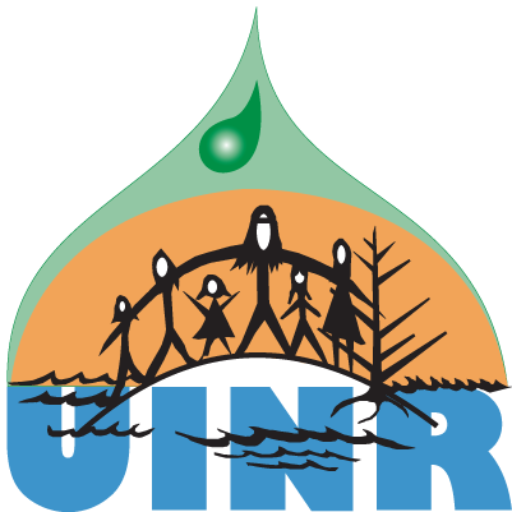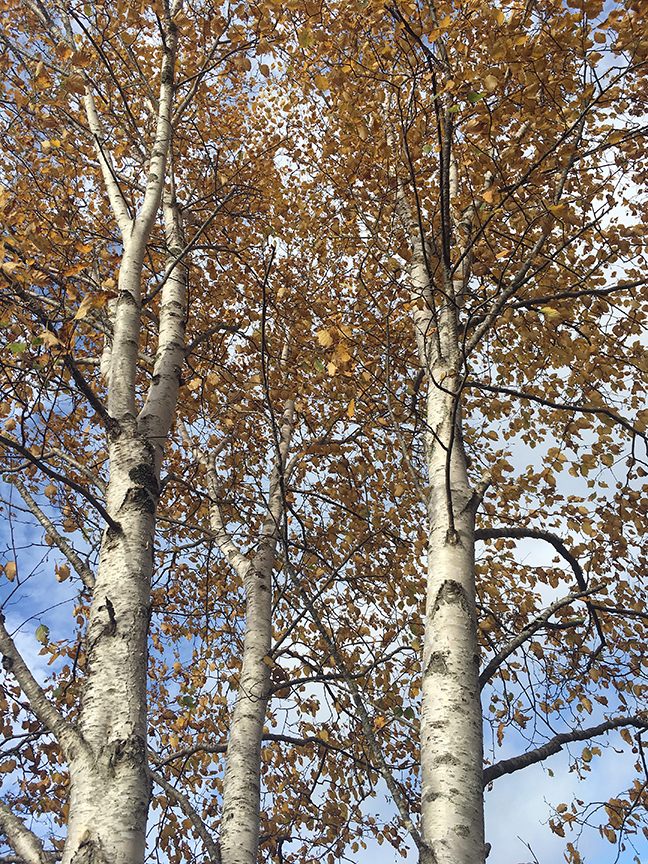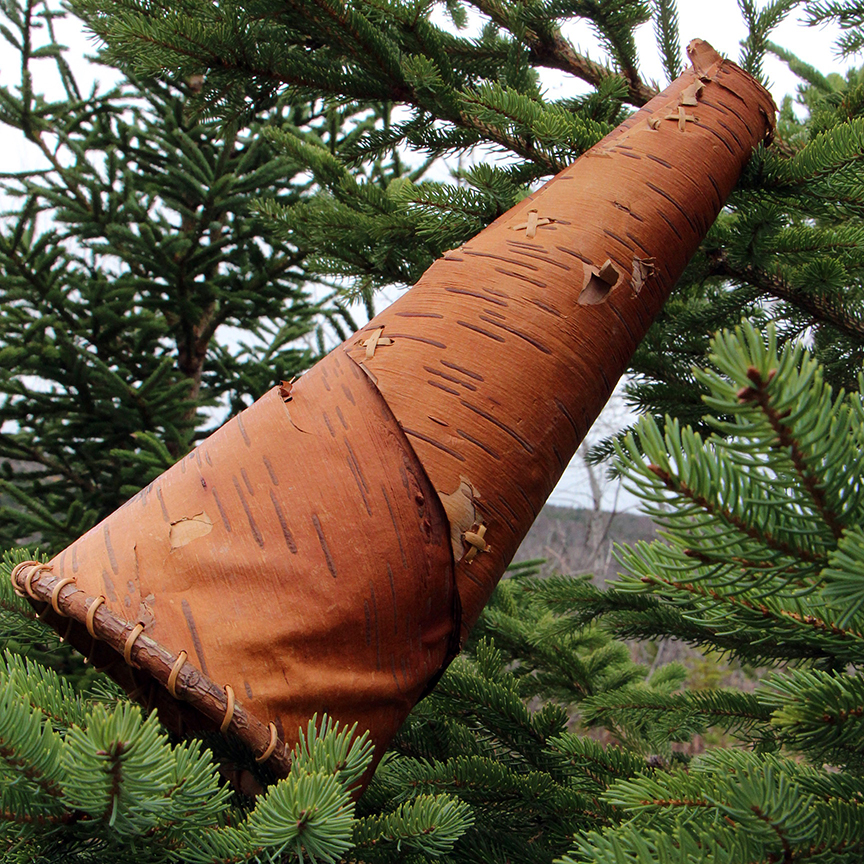Our forests are more than just the trees that we harvest to make the hundreds of products we use every day. Forests are the homes for animals, medicines, plants, birds, insects, and some say, spirits.
Our forests provide us clean air and water and, in return, healthy salmon, trout, and eels. It’s all connected!
Traditional Mi’kmaw lives were deeply rooted in the forests of Unama’ki and continue to be today. Understanding the forest, its diversity, its history starts with one tree.
Maskwi
For Mi’kmaw people, Maskwi (Betula papyrifera )was probably the most important tree in the forest and provided shelter and transportation. Its bark was used for everything from fabric to fibre to make wigwams, containers, and of course, canoes.
It’s easy to spot white birch on older trees. Their white, papery bark peels off easily. Younger trees have striped bark that is smooth and reddish in colour.
Birch bark is harvested twice a year, at the beginning of the spring for durable bark for canoes and containers, and in summer for making small, delicate items.
Now-a-days Maskwi is mainly used for firewood but there’s no better way to call a moose than with a traditional Maskwi caller!
Maskwi is so important to Mi’kmaw people, there are many words that refer to it:
Alnaskwe peeled out of season
Apknekwe peeled in season
Msuikwe peeled from an old tree
Pepku’kawa peeled in season
Pu’jkju’ birch basket
Sinsekwan peeled in winter
Check out uinr.ca for video, books, reports, and other information on forestry in Unama’ki.


